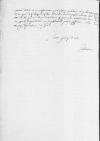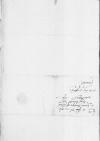Letter #831
Alfonso de VALDÉS to Ioannes DANTISCUSPassau, 1532-09-11
English register:
Valdés informs Dantiscus that he has fulfilled his request and made sure that the messengers who brought the horses for the emperor on Count Tarnowski’s behalf were generously rewarded.
The emperor left Ratisbonne on September 1, arriving in Passau yesterday and immediately went to see the troupes. There are rumors that the Turks are retreating, having burned just a few villages. To ascertain if this is true, the emperor wants to use Dantiscus’ help. Dantiscus will learn the details from the emperor’s letter, which Valdés is placing inside his own so that Dantiscus’ correspondence with the emperor doesn’t raise suspicion. He leaves it up to Dantiscus whether to reveal the matter to the king [Sigismund I] and whether to write back directly to the emperor or through Valdés. Valdés expects understanding from the king [Sigismund I] and cooperation from Dantiscus in the face of the Turkish threat. He wouldn’t have dared ask for a similar favor if the conflict had been between Christians.
The Turkish fleet arrived from the Kingdom of Naples in Epirus and then withdrew at the news that the imperial fleet was near Sicily. It has allegedly reached Constantinople already. If this is true, the imperial court will be able to travel across Italy to Spain.
Granvelle sends his regards. Valdés complains about the [English] envoy, who has done stupid things rather like Lewicki – Valdés will send Dantiscus a copy of his reply to the emperor’s request addressed to the Polish king regarding assistance against Turkey.
| received 1532-09-24 Manuscript sources:
Auxiliary sources:
Prints:
| ||||||||||||||||
Text & apparatus & commentary Plain text Text & commentary Text & apparatus
Reverendissimo in Christo Patri et Domino, domino
Cracoviae
Salutem plurimam.
Cum his, qui ex parte
illustrissimi
domini
De classe Turcica scribunt ad nos ex
Vale.
Tuus, quicquid est,
[2 ] Valdes describes an envoy of king of England Henry VIII as Levicianus comparing him with


